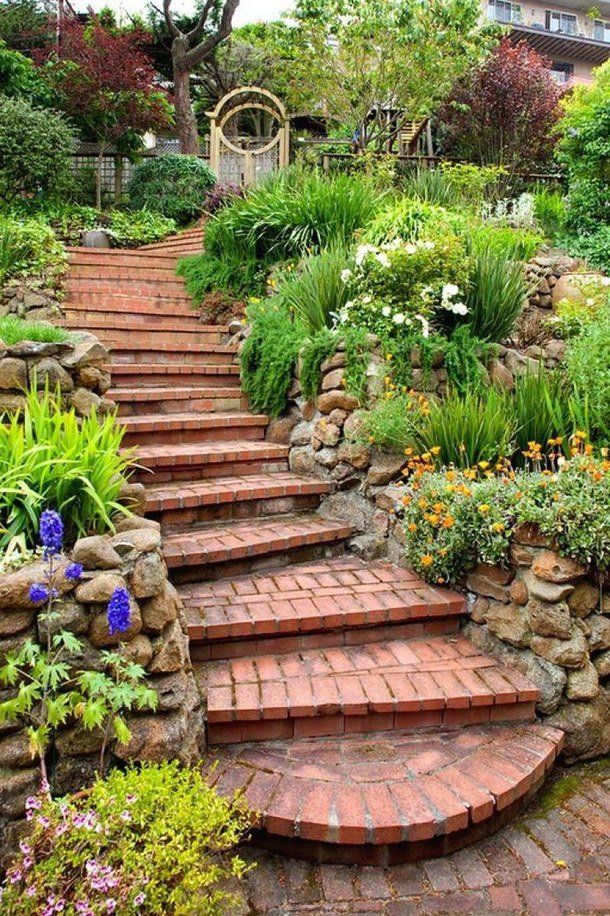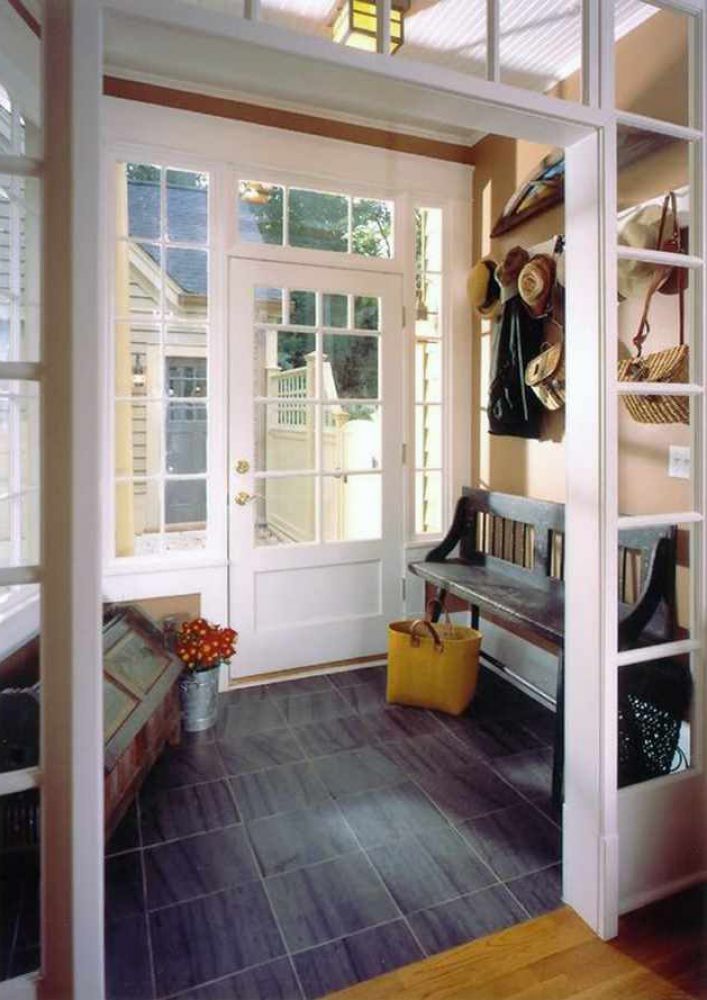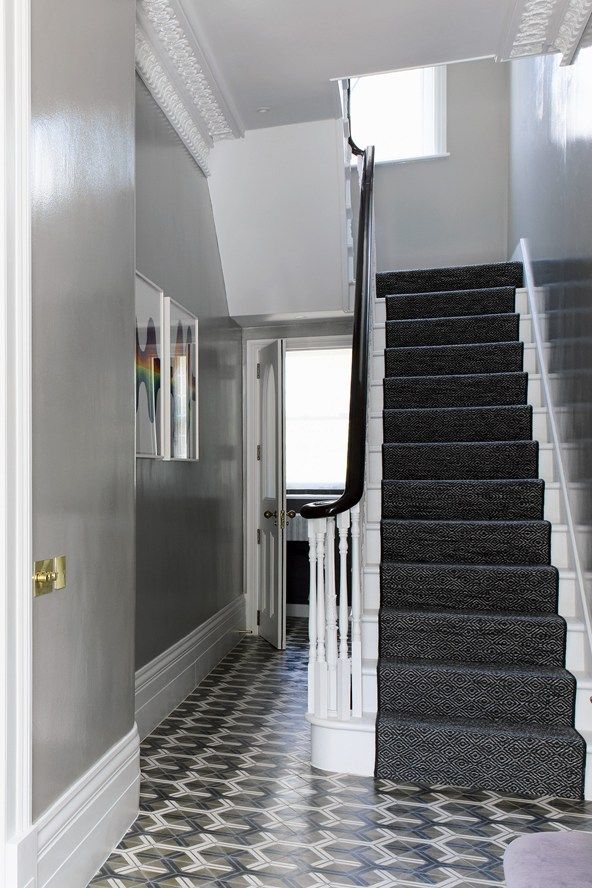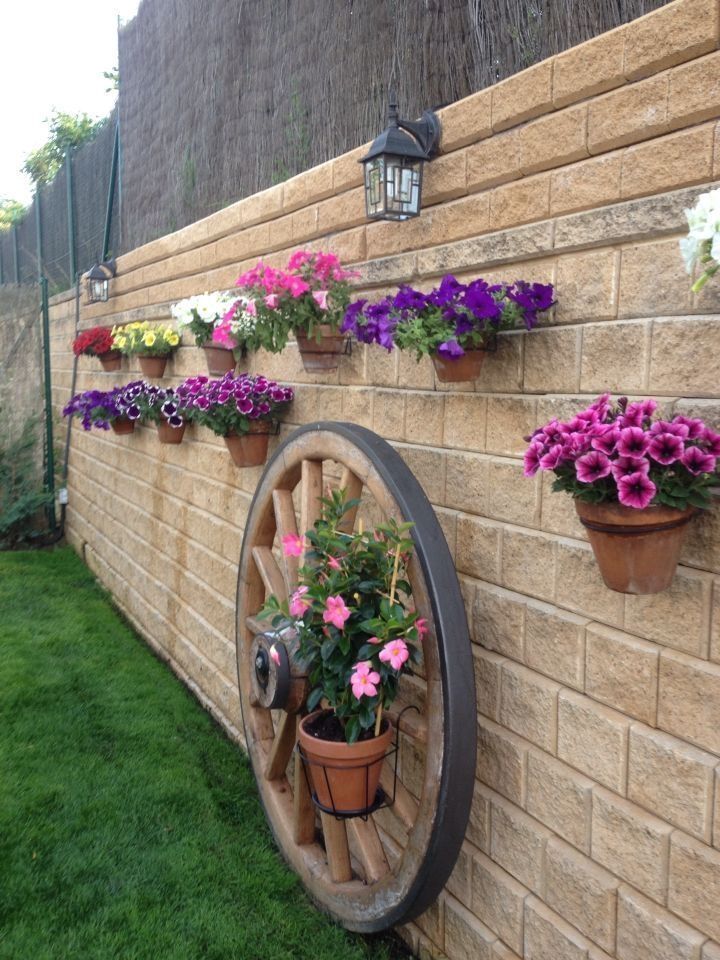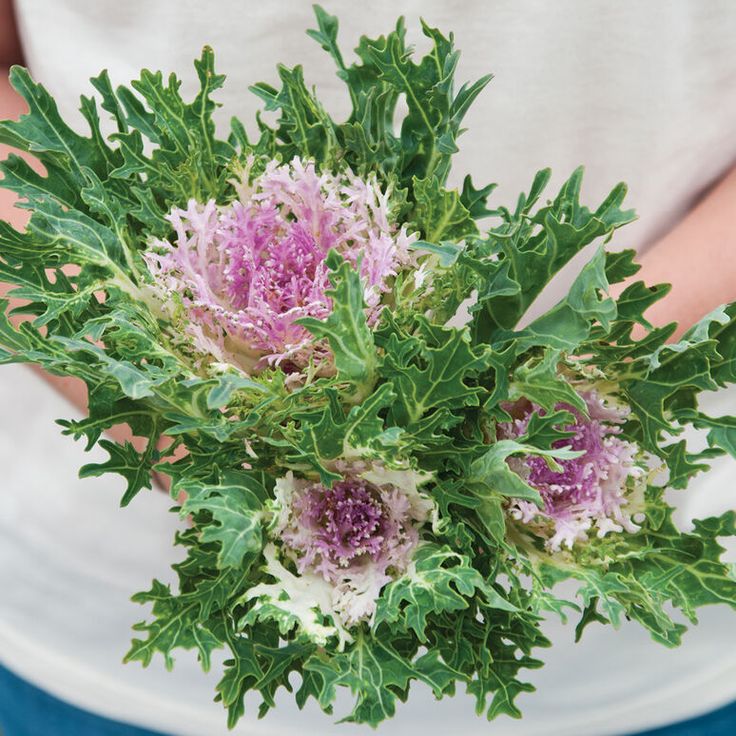Dwarf green beans
How To Grow French Beans (Dwarf)
Growing Dwarf French Beans
Dwarf French Beans are a compact habit plant that don't need staking like runner beans or peas. They are easy to grow and withstand dry conditions perhaps better than any other crop, and they leave the soil in very good if not better condition after cropping because of the nitrogen built up on the roots. French beans are picked when they are young and green, the beans are not removed but the complete pod cooked and eaten.
Soil Preparation
French beans prefer light soil, but can be grown in heavy clay soil if enough fine organic matter is forked in. During the Autumn or Winter dig in old compost or well rotted manure at one bucketful to the square meter. Leave the ground rough during the Winter to let the cold winds and frosts get to it. In the spring give the soil a light forking and add some organic fertilizer.
Sowing French Beans
French Bean seed should never be sown if the soil is wet and cold - never pour water in the drill at sowing time. For an early crop of French beans – sow under cloches.
Start in late March or early April for a harvest in June by sowing seeds in boxes of potting compost in a cold frame 5cm (2in) apart and 5cm deep.
Gradually introduce the seedlings to colder climates by raising the frame light to allow air circulation and leave off completely on fine warm days.
Transplant the French bean seedlings towards the end of May, 22.5cm (9in) between plants and rows 45.5cm (18in) apart.
Indoor Sowing
Sow French beans towards the end of May in 7cm 6 cell modules. Plant one seed per module about 4cm deep. Use a fine seed compost. Water and leave in the greenhouse or polytunnel to germinate. There should be no need for a heat bench or propagator this time of year. The seeds should germinate in 7 - 14 days and will grow quickly.
Hardening Off
Plants that have been raised indoors will need to get used to the outdoor temperature and conditions before they can be planted outside, this will take about a week to 10 days depending on the weather.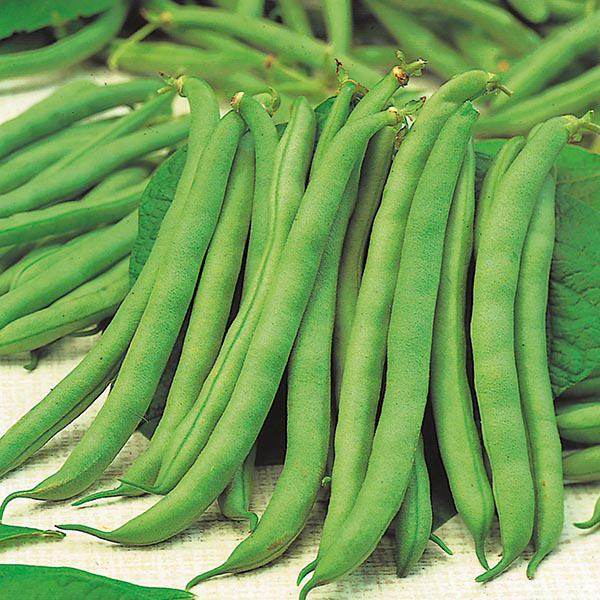 French beans hate the cold and are likely to suffer shock so make sure you do this. The best way is to use a cloche or mini greenhouse. You can leave the cloche off the plants on dry frost free days and replace at night. Gradually increase the time with the cloche removed until the end of the week when you leave it off day and night. If the weather is mild you may not need the cloche, just move the plants outside for longer periods each day. If you have started your seeds on a windowsill you will need to leave them in an unheated room for a day or two before moving outside to the cloche.
French beans hate the cold and are likely to suffer shock so make sure you do this. The best way is to use a cloche or mini greenhouse. You can leave the cloche off the plants on dry frost free days and replace at night. Gradually increase the time with the cloche removed until the end of the week when you leave it off day and night. If the weather is mild you may not need the cloche, just move the plants outside for longer periods each day. If you have started your seeds on a windowsill you will need to leave them in an unheated room for a day or two before moving outside to the cloche.
Direct Sowing Dwarf French Beans
French beans can be direct sown outside towards the end of May. It is possible to start them off earlier if you have a more southerly garden, I'm keeping on the safe side. Sow beans 4cm deep with a spacing of 15cm between plants and 40cm between rows. Slugs Slugs can be a major problem when seedlings are small. Use an organic slug pellet or use a beer trap for control.
Main Crop French Beans
Put cloches in place two weeks before sowing to warm up the ground. About the last week in April put out a line of string as a guide and form a V-shaped drill 5cm (2in) deep with the hoe.
Sow the French beans seed 15cm (6in) apart and then rake the soil back over lightly to cover the beans completely.
Firm the soil down with the flat part of the hoe - this sowing should be ready in early July.
Sow the next crop in May without glass. For a succession of crops and regular picking of beans you will need to sow a row of French beans every three weeks from April to the middle of July.
If you want to discover the best cropping powers and flavour for your particular garden try sowing a different variety each time.
It can be sometimes necessary to water under cloches when the plants are 15cm (6in) high. In early October, cover the mid-July sowings with cloches again to protect the French beans from frosts.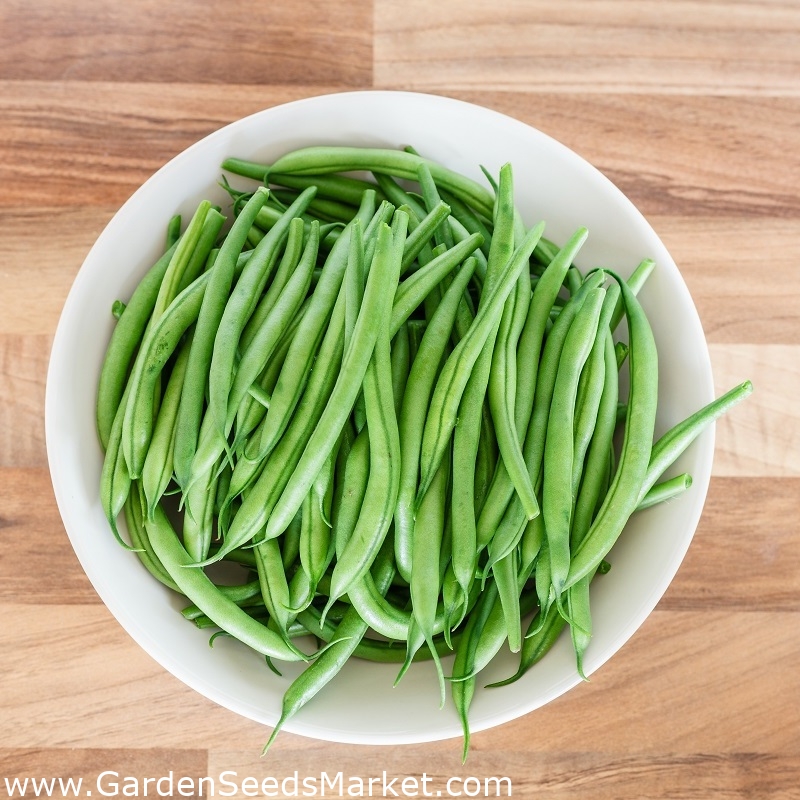 This way it is possible to pick French beans until the second week of November.
This way it is possible to pick French beans until the second week of November.
Planting Out
One you've hardened off your bean seedlings they are ready to be planted out in the garden. Choose a warm sheltered as French Beans hate exposed sites. Plant in rows with 15cm between plants and 40cm between rows.
Plant Care for French Beans
Keep the area around the seedlings weed free and aerated with regular hoeing. An oscillating hoe is the easiest and most satisfying tool for hand weeding.
Slugs
Keep an eye out for slugs as they can ruin all your hard work in no time. Use an organic slug bait or beer trap.
Apparently slugs love bran so leaving bran piles around the garden will attract them in their droves. You can collect them and throw them over your neighbour's wall. It is said they gorge themselves so much they explode but I can't say I've ever witnessed this particular spectacle.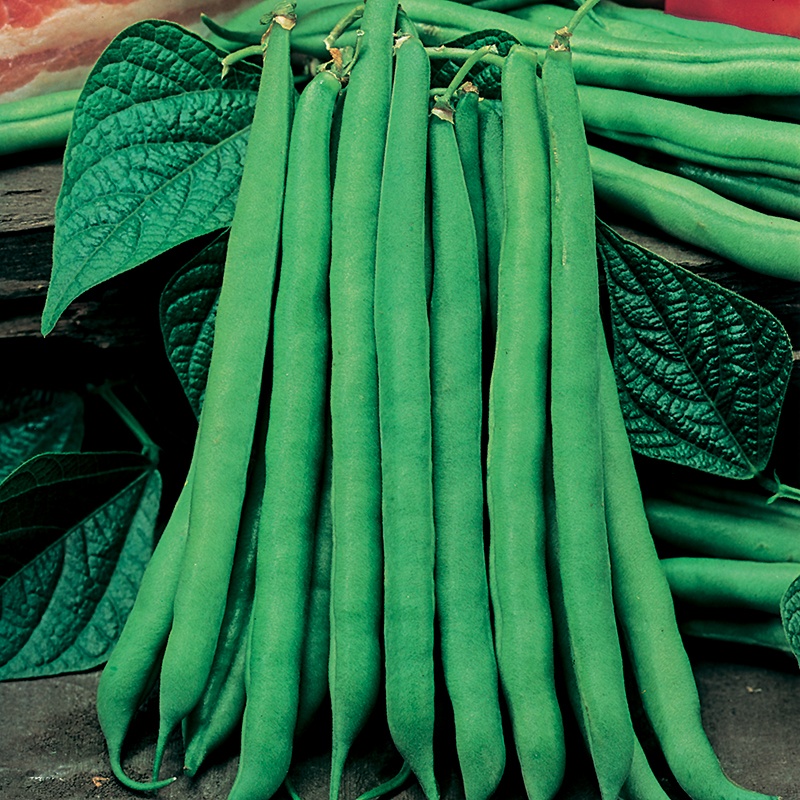
Thinning
When the French Bean plants are about 10cm (4in). high, thin them to (22.5cm (9in) apart.
When the pods are formed you can help a little by pushing in some twiggy sticks to keep the plants upright and prevent the beans from trailing on the ground - but normally French beans will stand upright of their own accord.
Supporting the French beans also keeps them clean and lessens the possible threat of damage by slugs. So you could put bamboo canes at both ends of each row and tie some string between them to help keep them upright. Hoe lightly between the rows to keep down the weeds. When you do this, draw the soil up to the plant rather than away.
Pests
Slugs as they can ruin all your bean plants in no time. Use an organic slug bait or beer trap.
Black bean aphid (Blackfly) can be problem in July and August. You can spray with the natural insecticide 'Pyrethrum' or wash off with a strong jet of water. Growing marigolds near beans can help as they attract beneficial insects like ladybirds who love to eat blackfly.
You can spray with the natural insecticide 'Pyrethrum' or wash off with a strong jet of water. Growing marigolds near beans can help as they attract beneficial insects like ladybirds who love to eat blackfly.
Downy Mildew and foot rot can be a problem but with good crop rotation this can easily be controlled.
Harvesting
Regular picking will encourage more pod formation and produce a bigger crop. Always pick young and tender pods. If you leave them to grow more than 10cm (4in) they become tough. Hold the stem and pull the pod in a downwards direction to avoid damage and uprooting when picking French beans. You can harvest your french Beans from July until the first frost. It's important to pick your pods regularly (at least once or twice a week) to get the tenderest beans. Many people are put off runner and French beans from eating beans which have grown too big and stringy.
Keep Picking!
If you don't keep harvesting the plant will put all its energy into ripening the seeds rather than producing fresh, new beans for you to eat. Even if you can't face another bean keep picking otherwise the plant will stop producing for the season. If you let just one or two beans ripen the plant will shut down production. You will have a glut of beans at some stage so read up on how to store them, give them away, compost them, whatever, just keep picking!
Even if you can't face another bean keep picking otherwise the plant will stop producing for the season. If you let just one or two beans ripen the plant will shut down production. You will have a glut of beans at some stage so read up on how to store them, give them away, compost them, whatever, just keep picking!
Storing French Beans
If you want dried beans (haricot) for the winter, leave a few plants to ripen and at the end of the summer cut them at ground level. Hang the beans to dry upside down in the sun (cover in bad weather). When the French bean pods are absolutely crisp and dry, shell them and store in airtight containers.
French beans - How to Grow / RHS Gardening
- Advice
- Advice search
- Beginner's guide
- This month
- Grow Your Own
- Wellbeing
French beans are delicious and easy to grow in the ground or in containers. The slender, stringless beans make great finger food for children, and come in a range of attractive colours – as well as the usual green, you can grow cream, yellow and purple-podded varieties.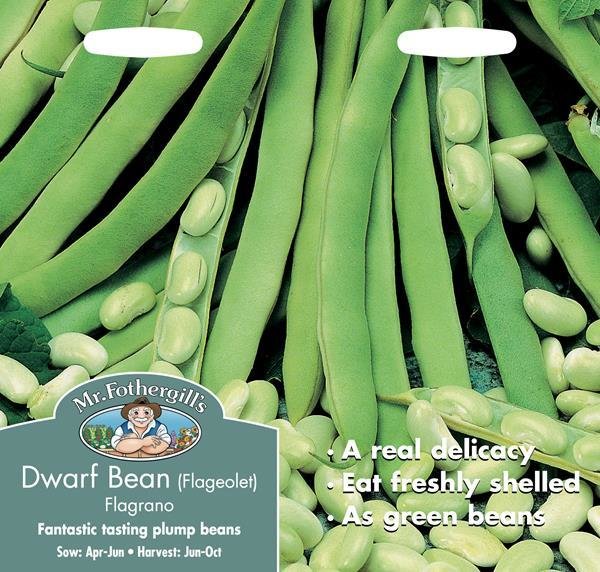 There are fast-cropping dwarf varieties, as well as climbing varieties that crop over a longer period – both are ideal in small spaces as they take up little ground space.
There are fast-cropping dwarf varieties, as well as climbing varieties that crop over a longer period – both are ideal in small spaces as they take up little ground space.
Save to My scrapbook
Jobs to do now
- When cropping has finished, remove and compost
Month by month
| January | February | March |
|---|---|---|
| April | May | June |
| Sow | Sow | Sow |
| July | August | September |
| Sow Harvest | Harvest | Harvest |
| October | November | December |
| January | February | March | April | May | June |
|---|---|---|---|---|---|
| Sow | Sow | Sow | |||
| July | August | September | October | November | December |
| Sow Harvest | Harvest | Harvest |
Jump to
- Sow
- Grow
- Harvest
- Varieties
- Problems
- Recipes
Sow
There are two types of French bean – climbing and dwarf.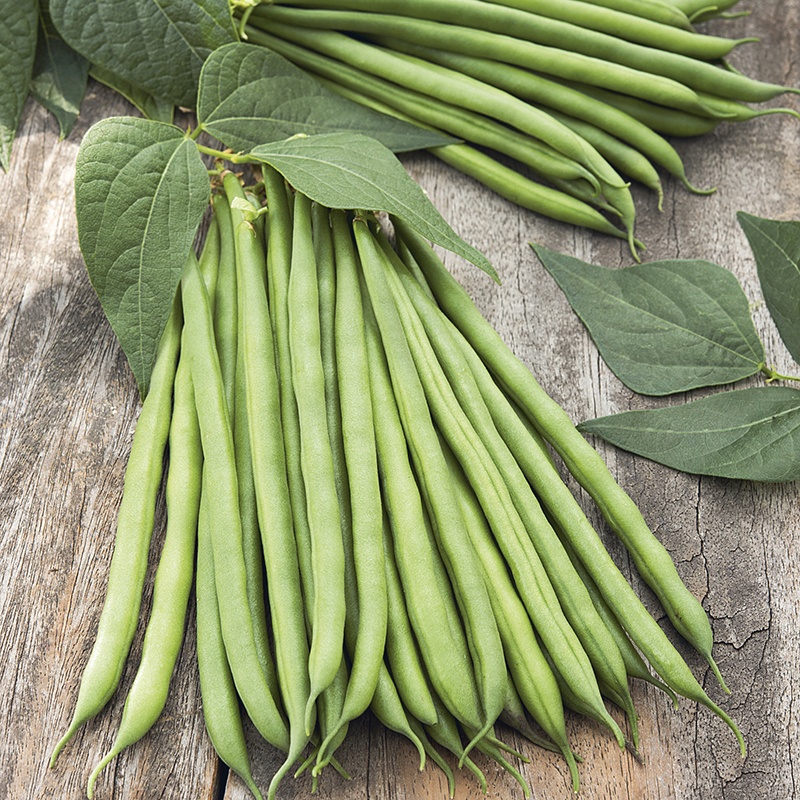 Dwarf beans are perfect for small spaces, growing well in containers and in the ground. Climbing beans need tall, sturdy supports and do best in the ground, but can also be grown in large containers. As they grow vertically, climbers produce a large crop in a small area of ground.
Dwarf beans are perfect for small spaces, growing well in containers and in the ground. Climbing beans need tall, sturdy supports and do best in the ground, but can also be grown in large containers. As they grow vertically, climbers produce a large crop in a small area of ground.
Dwarf beans are quick to grow, but only crop for a few weeks, so make repeat sowings for a summer-long supply. Climbing beans take longer to reach cropping stage, but will produce beans over a longer period, from mid-summer to early autumn if picked regularly.
You’ll find a huge range of varieties available as seed in garden centres and online. There are varieties with pods in a range of attractive colours, from traditional green through shades of yellow and dark purple. Look in particular for varieties with an RHS Award of Garden Merit (AGM), which shows they performed well in trials – see our list of AGM fruit and veg. If you don’t have room to grow from seed, young plants can also be bought from garden centres and online suppliers in spring, ready for planting outside.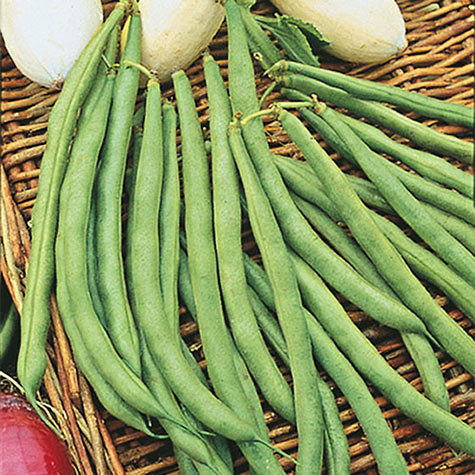
Sow indoors
For an early crop, sow indoors in late April to early May. Use small pots or modules, sowing one bean in each, 5cm (2in) deep. Place in a propagator or on a warm, sunny windowsill to germinate. They will grow fast in warm, bright conditions and need watering regularly.
In late May or early June, harden off the young plants to acclimatise them to outdoor conditions. Then plant into their final site, either in the ground or in a large container, after all risk of frost has passed – see Plant outside, below.
Sow outdoors – in the ground
French beans can be sown outdoors once all risk of frost has passed and the soil is warming up. This is usually in late May or early June, depending on your local climate. You can warm the soil with fleece or cloches before sowing, then leave the covering in place after sowing to give the young plants extra protection.
If growing in the ground, choose a warm, sunny spot, then prepare the site by removing weeds and forking in plenty of well-rotted manure or garden compost, and watering well.
With climbing beans, it’s best to put the supports in place before sowing – these are usually tall bamboo canes, in a wigwam or double row – see Grow, below, for details.
Dwarf beans are best sown in blocks rather than rows, so they support each other.
Sow the seeds individually, 5cm (2in) deep and 15cm (6in) apart. With dwarf beans, you can make several sowings of small batches a few weeks apart, to provide harvests over a longer period.
Sow outdoors – in containers
You can sow seeds outdoors into pots of multi-purpose compost in spring – either into small pots for transplanting into the ground later, or into large containers as their final growing site. Sow one bean per small pot, 5cm (2in) deep, and place in a coldframe or a warm, sheltered position. The seedlings may need some protection (such as fleece) at night. Once the plants reach 8cm (3in) tall and all risk of frost has passed, plant out into their final positions (see Plant outside, below).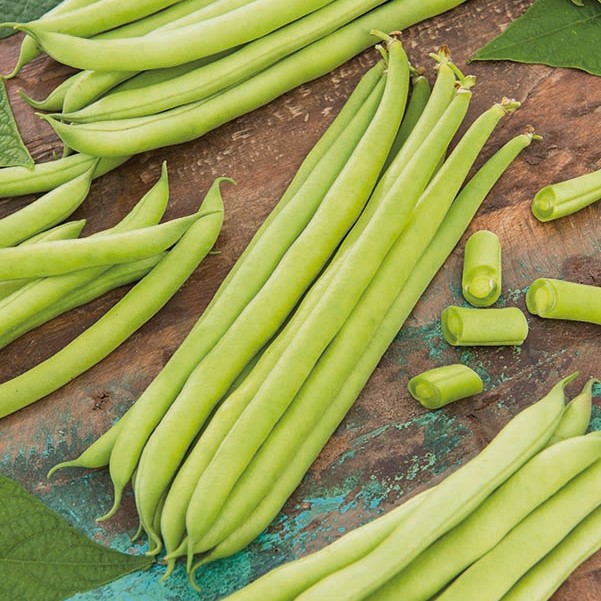
Both dwarf and climbing beans can be grown in large containers and make attractive additions to patios and small gardens. They need a warm, sheltered, sunny position. For dwarf beans the container should be 30–45cm (12–18in) wide, and for climbing beans 75cm (30in) wide and 45cm (18in) deep – a large tub or half-barrel is ideal.
Simply sow the seeds direct into the container, spacing them 15cm (6in) apart. Insert a wigwam of 1.8m (6ft) canes to support climbing beans (see Grow below), and choose a heavy container to keep it from toppling over. Dwarf beans don’t usually need support and look great cascading over the sides of a pot, or even in a hanging basket.
Plant outside
Wait until after the last frost before planting indoor-raised or bought young plants outside. Then harden them off to acclimatise them to outdoor conditions for a couple of weeks, either by putting them in a coldframe or placing them in a warm, sheltered spot, covered with fleece. Once hardened off, plant them into their final growing position, in a sunny, sheltered spot.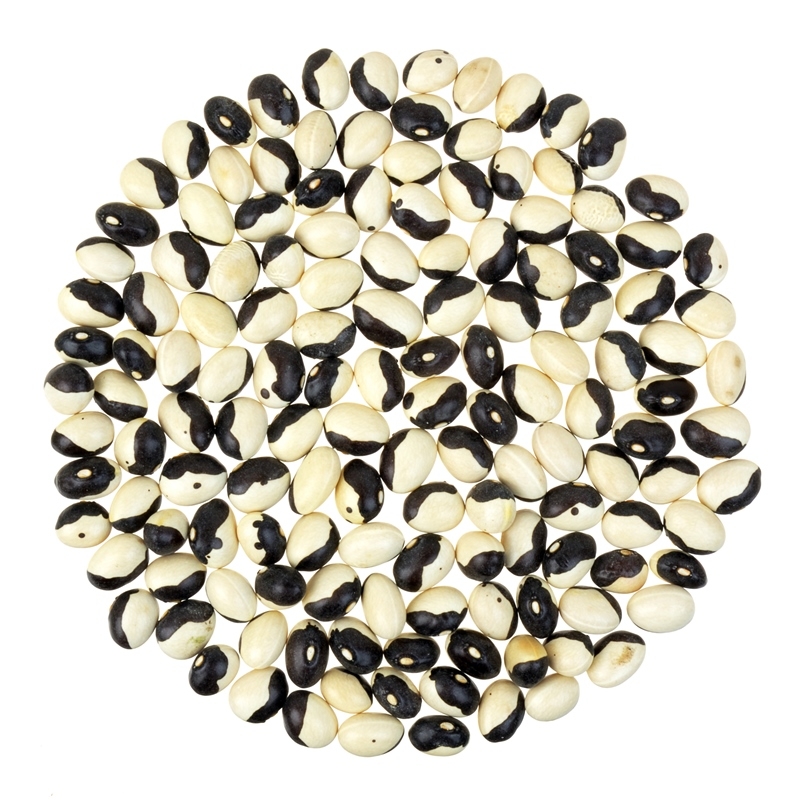 If planting in the ground, enrich the soil with well-rotted manure or garden compost beforehand. If planting in a container, choose multi-purpose or loam-based compost. Containers should be at least 30–45cm (12–18in) wide for dwarf beans, and 75cm (30in) wide and 45cm (18in) deep for climbing beans.
If planting in the ground, enrich the soil with well-rotted manure or garden compost beforehand. If planting in a container, choose multi-purpose or loam-based compost. Containers should be at least 30–45cm (12–18in) wide for dwarf beans, and 75cm (30in) wide and 45cm (18in) deep for climbing beans.
Water plants well before and after planting, and space them 15cm (6in) apart.
With climbing beans, it’s best to put the supports in place first – see Grow, below. Position one plant at the base of each cane, and loosely tie the shoots to the cane to get them started.
Grow
Supporting French beans
Climbing French beans need tall, sturdy supports to climb up. The traditional method is to grow them along a double row of bamboo canes (1.8m/6ft tall), with 45cm (18in) between the two rows. Space the bamboo canes 15cm (6in) apart within each row and slope them inwards, then tie near the top to a horizontal cane, to form an A-frame.
Alternatively, create an X-frame by sloping the canes at a sharper angle so they cross in the middle. Tie them at the centre, and add a horizontal cane to link them all together and increase stability. An X-frame takes up more space, but picking is easier and cropping is usually better.
Tie them at the centre, and add a horizontal cane to link them all together and increase stability. An X-frame takes up more space, but picking is easier and cropping is usually better.
If you don’t have room for a double row of canes, you can make wigwams. Again, use 1.8m (6ft) canes, four or five per wigwam, spacing them 15cm (6in) apart at the base. Tie the tops of the canes together. Wigwams make an attractive feature in a border or veg plot and also work
well when growing in containers. Loosely tie young plants to the canes to get them started.
With dwarf beans, you can insert short twiggy sticks between the plants to keep them upright and lift the pods off the soil.
Watering
Beans are thirsty plants and crop best when watered regularly, especially once they start to flower and form pods. Regular and generous watering is particularly important for plants growing in containers, which dry out quickly.
MulchingPlace a mulch of well-rotted manure or mushroom compost around plants in July to help hold moisture in the soil.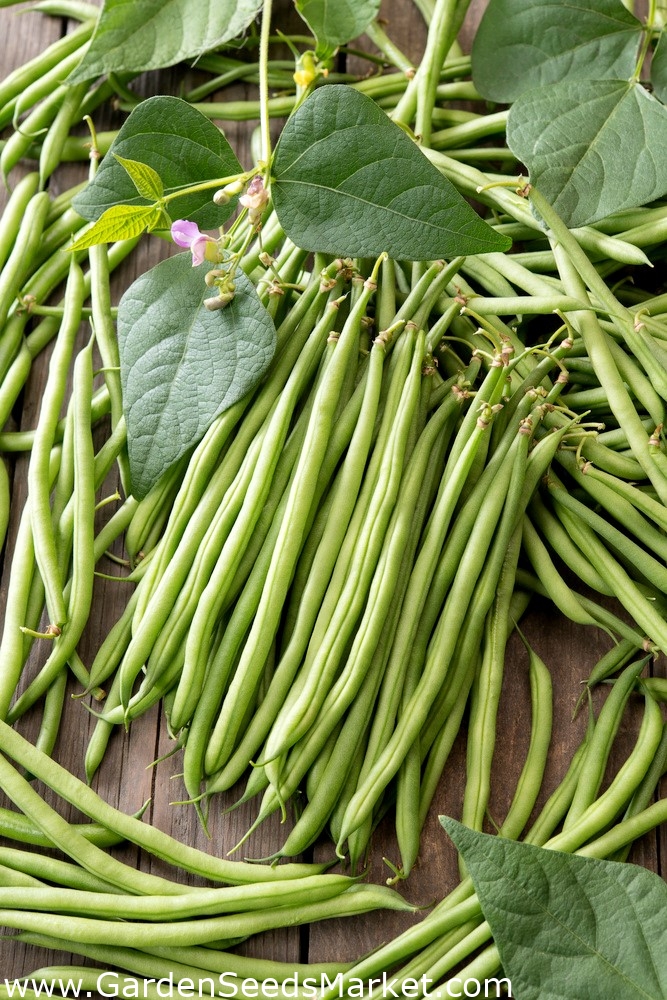
Weeding
Keep plants weed-free. Growing plants through slits in weed-suppressing membrane is possible, and prevents the pods of dwarf beans being damaged by contact with the soil.
Harvesting
You can harvest French beans from mid-summer to early autumn. If picked regularly, dwarf French bean plants will crop for several weeks and climbing French beans for much longer.
Begin picking the pods when they’re 10cm (4in) long. They are ready when they snap easily and before the beans can be seen through the pod.
Recommended Varieties
French beans — climbing
French beans — dwarf
Common problems
Slugs and snails
These feed on the young seedlings and you'll see the tell tale slime trail on the soil around your crop, as well as on the leaves.
Remedy
There are many ways to control slugs and snails, including beer traps, sawdust or eggshell barriers, copper tape and biocontrols.
Birds
Birds, especially pigeons, can cause an array of problems including eating seedlings, buds, leaves, fruit and vegetables.
Remedy
Protect the plants from birds by covering them with netting or fleece. Scarecrows and bird-scaring mechanisms work for a while, but the most reliable method of protection is to cover plants with horticultural fleece or mesh.
Black bean aphid
Sap-sucking aphids will disfigure plants and cause stunting to leaves and stems.
Remedy
In the case of broad beans, pinch out infested tips. On other beans, catch populations when small and squash.
Recipes
Try this simple summer salad of French beans atop mozzarella slices with an unusual yoghurt dressing.
Save to My scrapbook
Get involved
The Royal Horticultural Society is the UK’s leading gardening charity. We aim to enrich everyone’s life through plants, and make the UK a greener and more beautiful place.
reviews, photos and characteristics on Aredi.ru
Our website displays products that are automatically imported from allegro. pl and translated into Russian.
pl and translated into Russian.
Since we are not the seller of the product displayed on our site, we cannot have all the information about a particular product. Additional information about the goods can be found in several ways:
1. Read the description in detail. Usually all the necessary information is in the official description on the lot page.
2. If the information you are interested in is not in the description, you can ask the question directly to the seller. He will respond to you within one business day.
3. If you have a rich experience of surfing the Internet, you may be able to find information about this product in various forums and other Internet resources using global Internet search services.
4. If you do not speak the language or do not want to clarify the information for any other reason, please contact us - we will be happy to help you. In order for us to ask the seller a question, place an order and write down your questions in the comments to the product.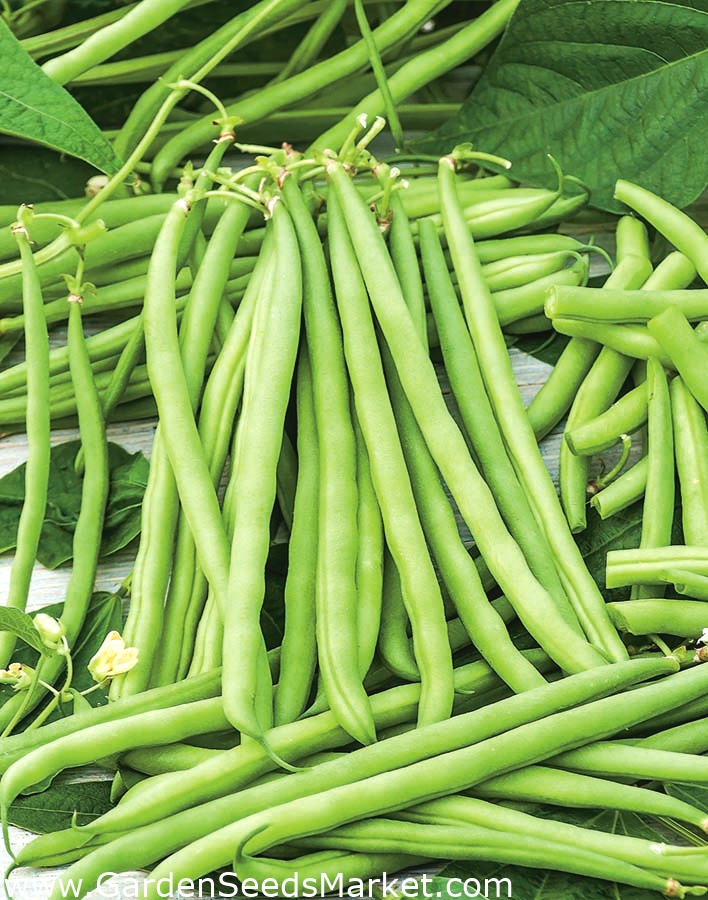 During the day we will make a request to the seller, comments will appear in your personal account.
During the day we will make a request to the seller, comments will appear in your personal account.
1.Search by keywords, check the catalog on the left
Suppose you want to find a headlight for AUDI, but the search engine returns a lot of results, then you will need to enter the exact make of the car in the search box, then in the list of categories that is on the left, select a new category (Auto Parts - Car Parts - Lighting - Headlights headlights). After, from the presented list, you need to select the desired lot.
2. Shorten the query
For example, you need to find the front right fender for KIA Sportage 2015, do not write the full name in the search box, but write the fender KIA Sportage 15 . The search engine will say "thank you" for a short, clear question that can be edited based on the search engine's results.
3. Use similar combinations of words and synonyms
The system may not understand any combination of words and translate it incorrectly. For example, the query "computer desk" has over 700 lots, while the query "computer desk" has only 10 lots.
For example, the query "computer desk" has over 700 lots, while the query "computer desk" has only 10 lots.
for example, looking for glass on your smartphone, you need to score "glass on xiaomi redmi 4 pro" and not "glass on xiaomi redmi 4 pro".
5. Write abbreviations and abbreviations in English
If you give an example, the phrase “bmw e65 hub” will give no results due to the fact that in e65 the letter e is Russian. The system does not understand this. In order for the automation to recognize your request, you need to enter the same thing, but in English - “BMW e65 hub”.
6. Few results? Look not only in the title of the ad, but also in the description!
Not all sellers write the necessary search parameters in the ad title, so use the search function in the ad description! For example, you are looking for a turbine and you know its number "711006-9004S”, insert the number into the search box, select the “search in description” checkbox - the system will return much more results!
7. Feel free to search in Polish if you know the name of the thing you need in this language
Feel free to search in Polish if you know the name of the thing you need in this language
You can also try using Yandex or Google translators for these purposes. Remember that if you have unresolvable problems with the search, you can always contact us for help.
Growing green beans in the suburbs of Moscow in Tobolsk: 500 products: free shipping, 52% discount [link]
Partnership program Upon
Tobolsk
Catalog
Catalog of Products
Clothes and shoes
Clothes and shoes
Builder materials
Building materials 9000 beauty
Children's goods
Children's goods
Electrical engineering
Electrical engineering
Food and drinks
products and drinks
industry
Industry
furniture and interior
furniture and interior
water, gas and heat
water, gas and heat
Agriculture
Agriculture
included
Growing green beans in the suburbs
Tourist food Kronid Turkey Co Green beans Beans 300 Gr.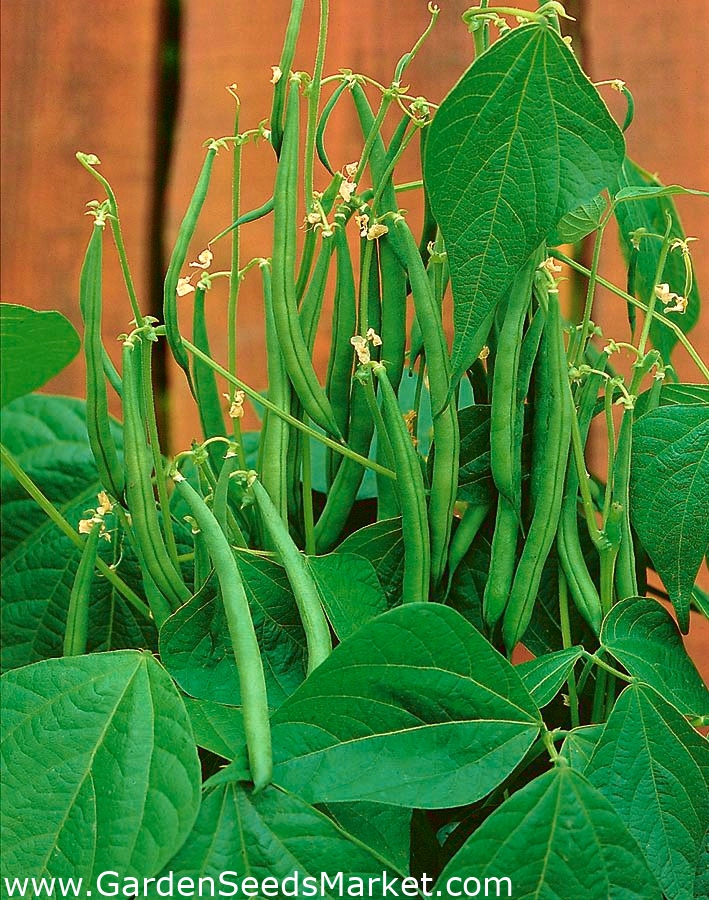
IN STOREMore prices and similar items
Tourist food Kronid Turkey So Green beans Beans 300 Gr. Type: finished dish, color:
more than prices and similar goods
beans Sharp eastern miracle manufacturer: agrarian-industrial house, vegetables: beans , culture:
more details and similar goods
beans . crop seeds, beans top crop seeds buy Vegetables: beans , Crop: vegetables
MORE DETAILSMore prices and similar items
Meatballs with green beans beans "Equilibrium" 70g, 2 packs / Ready meals / Instant food / Tourist food / Food for a hike, Food to go, Camping food / Sublimates 900RE5E57 prices and similar products
Seeds Beans asparagus "Saksa without fiber 615", 3 g Producer: SEMBAT, Vegetables: beans ,
DETAILSMore prices and similar products
Seeds beans Sharzhevaya / beans Blue Hilda / Set 2 packages Vegetables: beans , Culture: Vegetables,
More prices and similar products
Podchkova
908 ° Basoli 908, 308 beans with beans with poonings.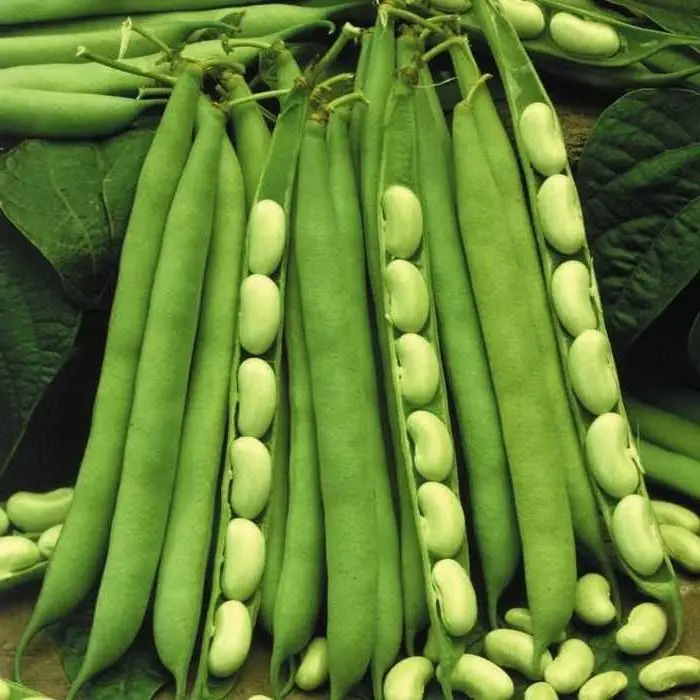 MORE DETAILSMore prices and similar products
MORE DETAILSMore prices and similar products
Seeds Beans asparagus Tenek-chill, 5.0g, Gavrish, Seeds from the author Producer: Gavrish, Vegetables:
DETAILSMore prices and similar products
349
628
Seeds Feres Sharz Sax without fiber 615, 3 g (3 c.) Manufacturer: without brand, Vegetables:
More prices and similar goods
Plant PHELSA BREETS 6 SCA Producer: PLANT, Culture: legumes and cereals, Quantity
DETAILSMore prices and similar products
Pkhali Uncle Vanya from green beans beans with walnuts 350g Type: canned vegetables, Brand: Uncle
more than the price and similar goods
Phali uncle Vanya from patch beans with walnut 350g type: canned vegetables, brand: uncle
Reads
chicken-grille beans Flavor: chicken fillet, grilled chicken, beans
DETAILSMore prices and similar products
Grilled chicken with pineapple and green beans beans Taste: grilled chicken, beans
MORE DETAILSMore prices and similar products Type
more than prices and similar goods
beans Melody 20 pcs manufacturer: Search, Vegetables: beans , Culture: Vegetables
More prices and similar products
Seeds FORSAL SPARZHARY CREAVEST, 5.

